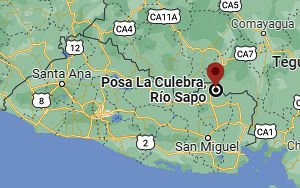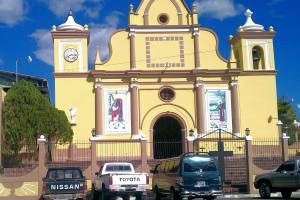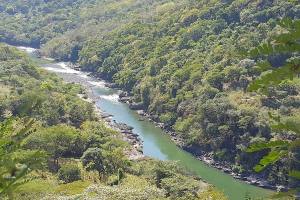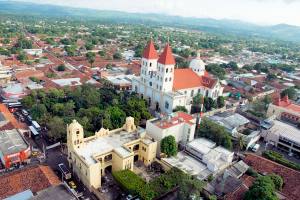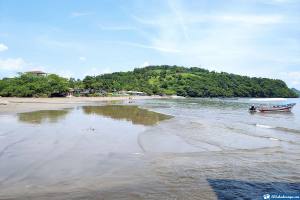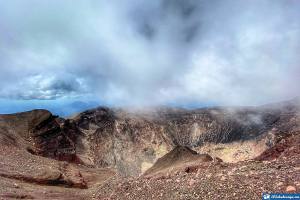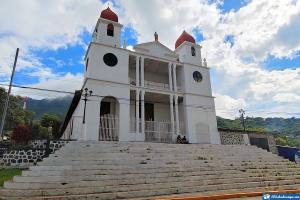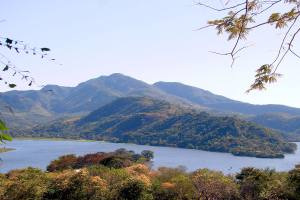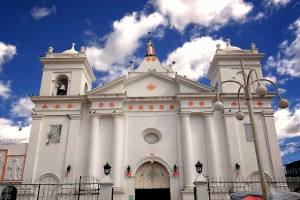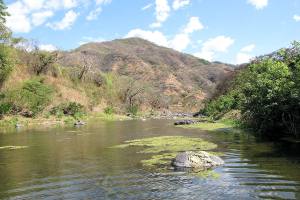America’s little thumb is known as a land of waters and volcanoes. That is why we dedicate ourselves to discovering more about the Sapo River, one of the Salvadoran natural water streams, which besides being part of the Lempa River basin, is an irresistible place to visit during your visit to this fascinating Central American country.
Located between the municipalities of Arambala and Perquín, in the department of Morazán, in the northeast of the country, it is the most attractive water flow in all of El Salvador and a delicate habitat as it is a unique reserve of flora and fauna, some of which are in danger of extinction.
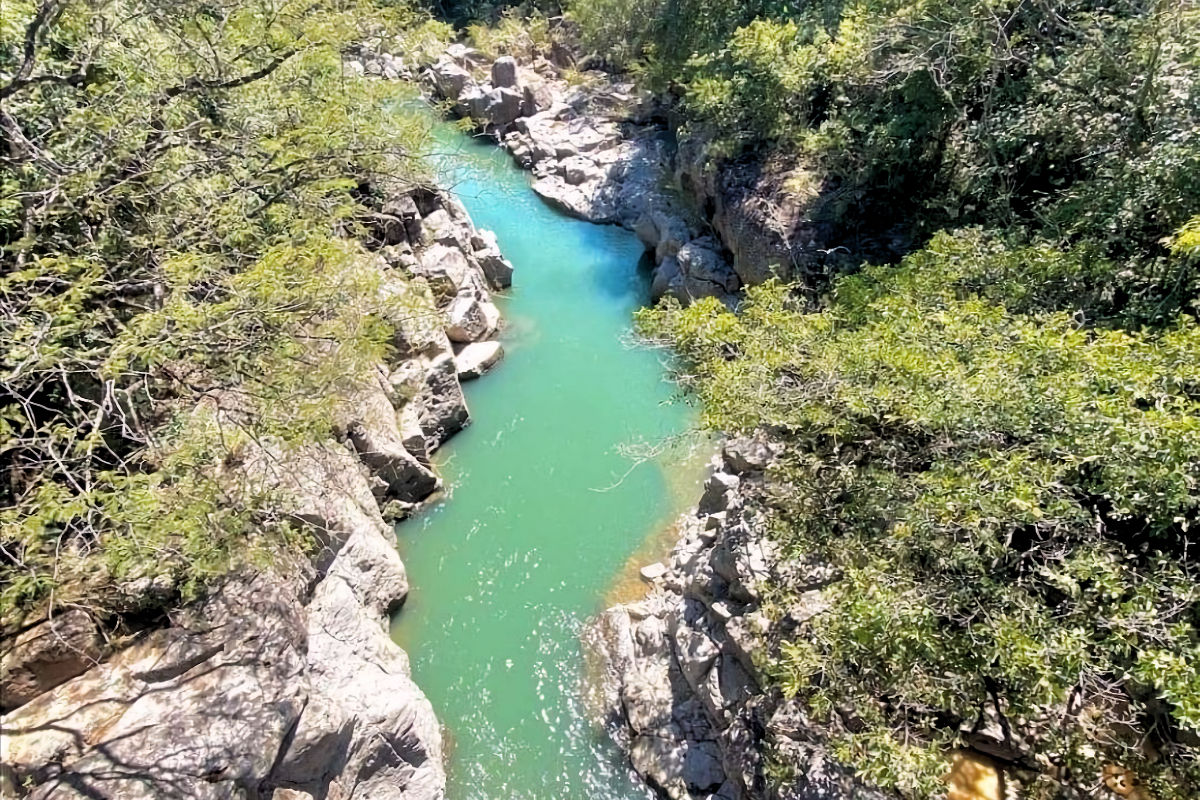
SAPO RIVER - Rivers of El Salvador. Photo by Briandvid. Wikimedia Commons.
It extends for almost 6000 hectares of forests made up of oak and pine trees, 20 kilometers long and a depth ranging from 1 to 2 meters.
Likewise, its turquoise waters tell us that it is the “cleanest river in El Salvador” since it does not receive pollutants of any kind.
It opens its way over virgin lands and rocky formations, leaving a humid environment that favors the development of flora and fauna that thrives in its margins.
About the origin of its name, it is presumed that it is because, in its bed, there are at least five types of amphibians, two toads, and three frogs. But it is also said that the name comes from a plant. The grass of the toad is tiny, with white flowers.
As a curiosity, we tell you that the Sapo River was located in the Nahuaterique Mountain Range, which is currently part of Honduras, suggesting that at some point in its history, it shared its vigor with the lands of the brother country.
Sapo River Data
| Country: | El Salvador |
|---|---|
| Category: | Rivers |
| Source of the River: | Perquín |
| Mouth of the River: | Torola River |
| Length: | 20 km |
| Watershed: | Lempa River |
What to see and do in the Sapo River
Ecotourism lovers frequently come to this place because, apart from its natural beauties, we can observe birds, swim in its clear pools, or enjoy the sound produced by the flow of the waters of the Sapo River and its friction with the stones.
If you are daring, you can practice rappeling or climbing, although it is always advisable to do so with caution.
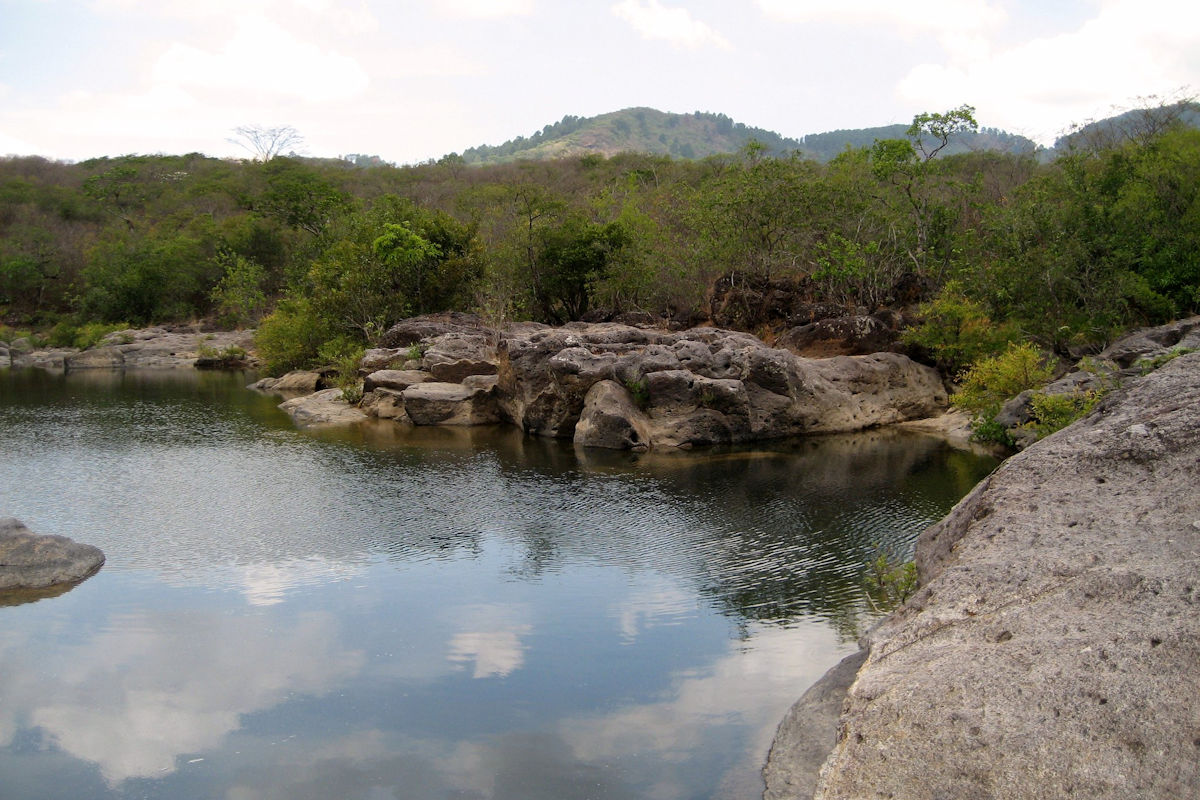
On the other hand, walking along its shores or some trails will allow you to enjoy the extraordinary flora, forests, and fauna that surround this fascinating place, bringing relaxation to those who visit it.
Additionally, you have the possibility of camping in places intended for this purpose, being very careful during your stay and avoiding as much as possible damaging the fragile ecosystem.
Prices and schedules
Access to the Sapo River is entirely free along its course. However, it is good to keep in mind that there are regulations in the areas where camping is allowed.
For example, in the municipality of Arambala, in the canton of Tierra Colorada, is the Posa La Culebra, where you can rest for several days, but you should know the following indications:
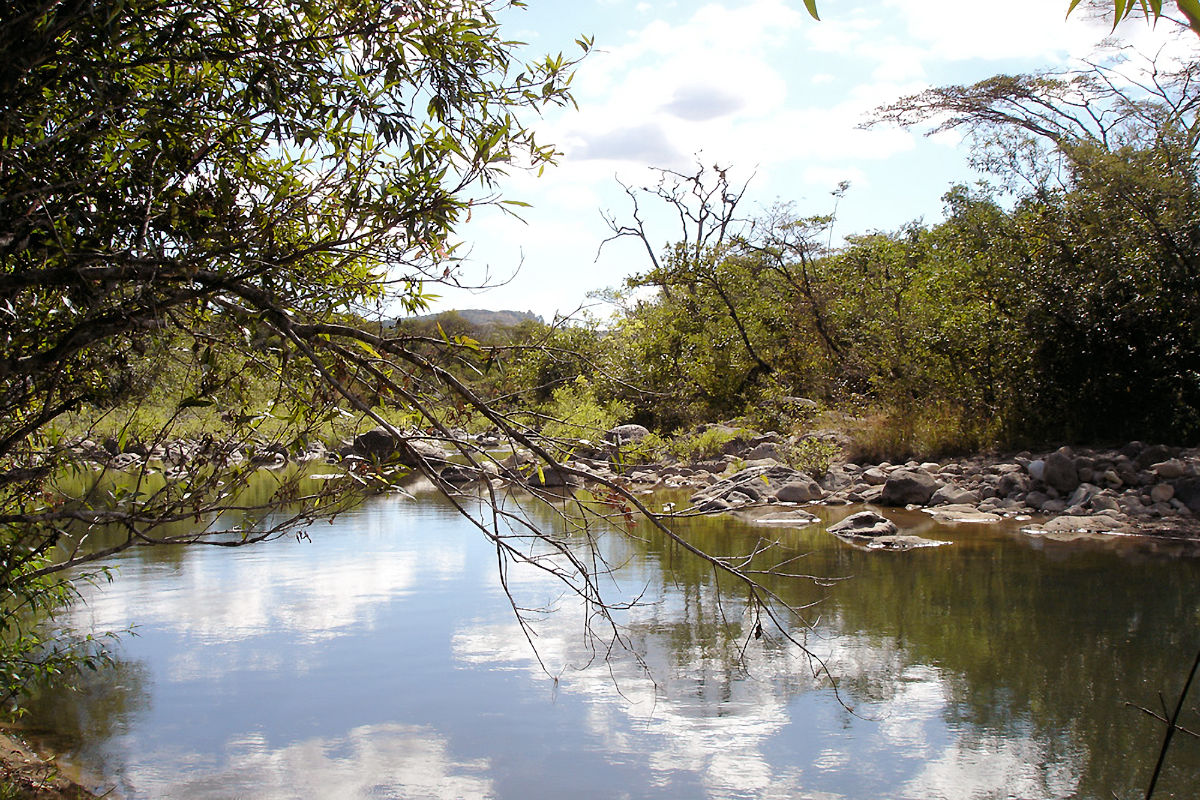
- Camping fees are $3 per person, and you must bring your tent.
- Hammocks are available for rent for $1 each.
- There is a specific space for cooking with firewood.
- You must bring cooking utensils such as pots, plates, and cutlery.
- You should also bring your water and food.
- Remember to take all your waste back home with you.
- Offers guided hiking service for $10 per group of people.
- They provide service 24 hours a day, every day of the week.
La Cueva del Ratón is another of the corners of the Sapo River where you can enjoy and camp. Located in the hamlet of La Tejeda, in the municipality of Perquín in the department of Morazán, this cave, hidden among the exuberant nature, also has its costs, which you should know before starting your trip:
- Admission for adults costs $1, while children will pay $0.50; this entitles you to use the pools and only visit the cave.
- Cabin rentals are $20 per day and $10 per night of stay.
- If you wish to rest in your tent, you pay $2 per person in the camping area.
- Hammocks are available for $1.
- You can rent a horse and go for a ride for $1 per ride.
- They are open from Monday to Sunday, and you can make reservations in advance.
Recommendations for the visit
All the spaces occupied by the Sapo River are susceptible to the impact humans can produce, so we must meet specific recommendations and make our stay in these places pleasant.
- It is recommended to bring insect repellent and sunscreen.
- Bring your extendable chairs.
- Avoid making fires or bonfires in places that are not expressly indicated.
- It is not advisable to use soap when bathing in the river to avoid contaminating its waters.
- It is forbidden to provide food to local animal species.
- It is essential to take the waste back with you or deposit it in the appropriate containers.
- If you spend the night at a campsite, it is essential to wear appropriate clothing since temperatures tend to drop during the night.
Climate, flora and fauna in the Sapo river
The richness of the Sapo River includes flora and fauna, making it unique in the country.
It is home to the last pumas found in El Salvador, as well as a species of iguana called garrobo espinoso and the river otter, which at the same time are endangered, as well as the king zope, a scavenger bird.
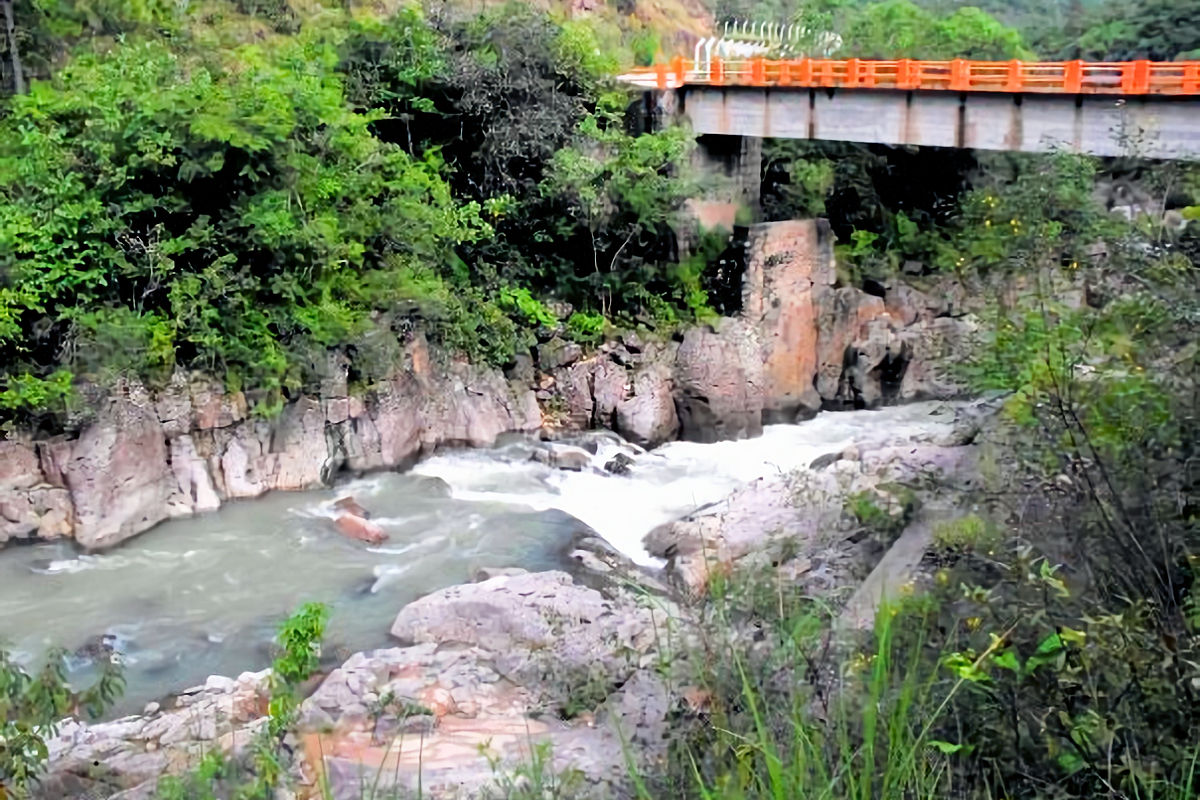
The fauna includes coyotes, deer, fish, amphibians, and a great variety of butterflies.
As for the flora, there are more than 30 species of trees, and many more species of grasses and shrubs, not to mention lichen.
The climate is tropical, with an average temperature between 22 and 28°C, and humidity can reach 91%. During the dry season, the Sapo River may lose the flow, and some nearby streams may dry up.
But during the rainy season, the volume of water increases considerably, and in some sectors, the river can reach up to 4 meters deep.
Nearby places to visit
Besides living the experience of the Sapo River, other nearby places in the department of Morazán will undoubtedly call your attention and help you get away from the stress caused by hectic daily life.
Bailadero del Diablo
It is a great destination to spend a day with family or friends, as it offers magnificent views of the nearby valleys, with roads, trails, and camping areas, and if that were not enough, during the nights, you could see the starry sky perfectly.
Llano del Muerto
It is another extensive area full of meadows, pine forests, and water springs that reach the Sapo River. Where we can camp, swim in the crystal clear rivers, or visit its delicious waterfalls, such as El Perol or El Caracol, taking the opportunity to have a magical massage.
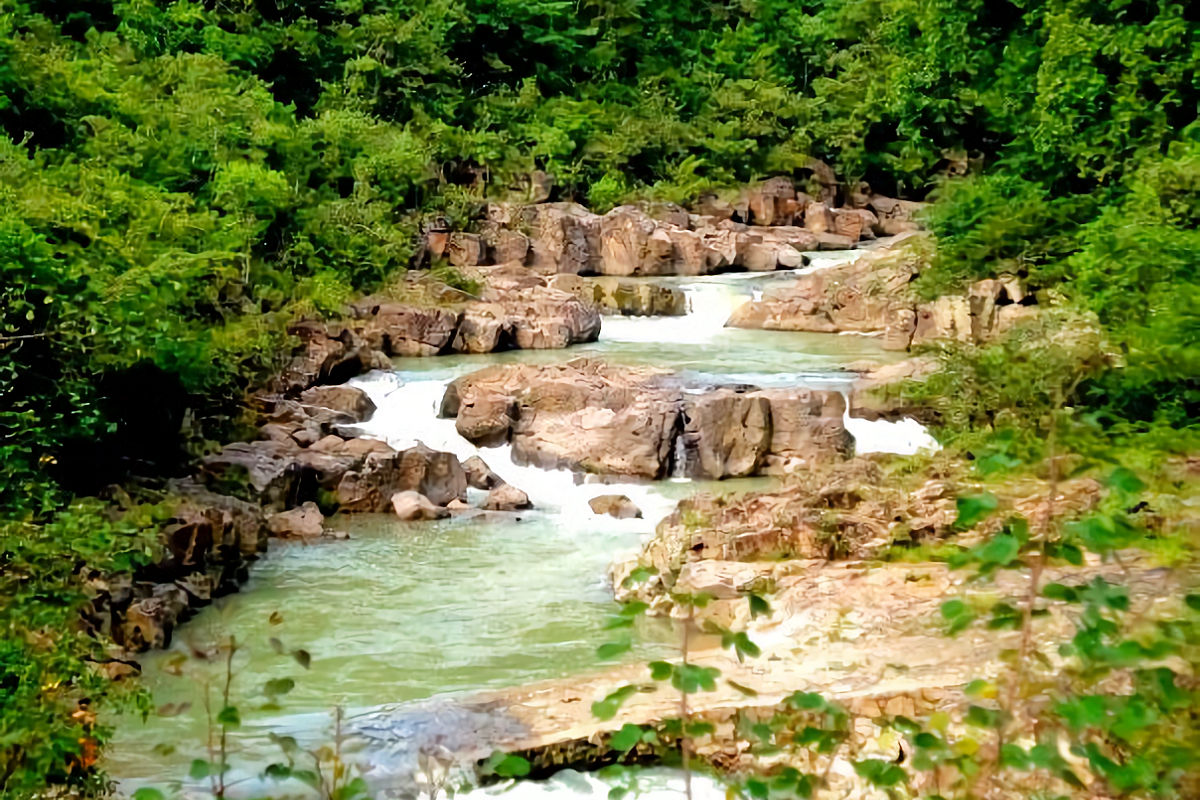
El Salvador gives us the opportunity to enjoy its great natural spaces full of life, and the visit to the Sapo River is a sample of it.
Unforgettable moments for every local or tourist who discovers these scenarios full of magic and beauty, which we must undoubtedly care for and protect to maintain its eternal charm.
